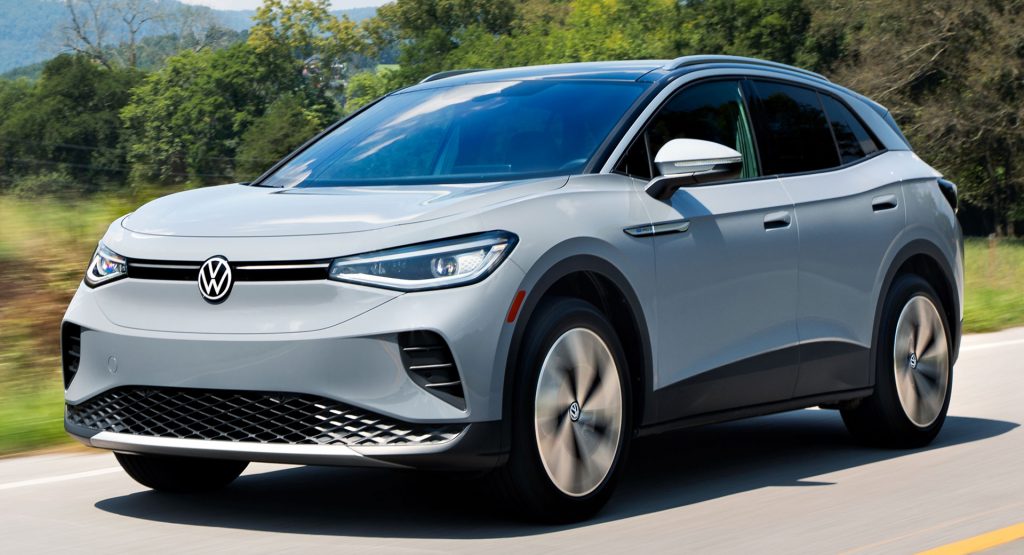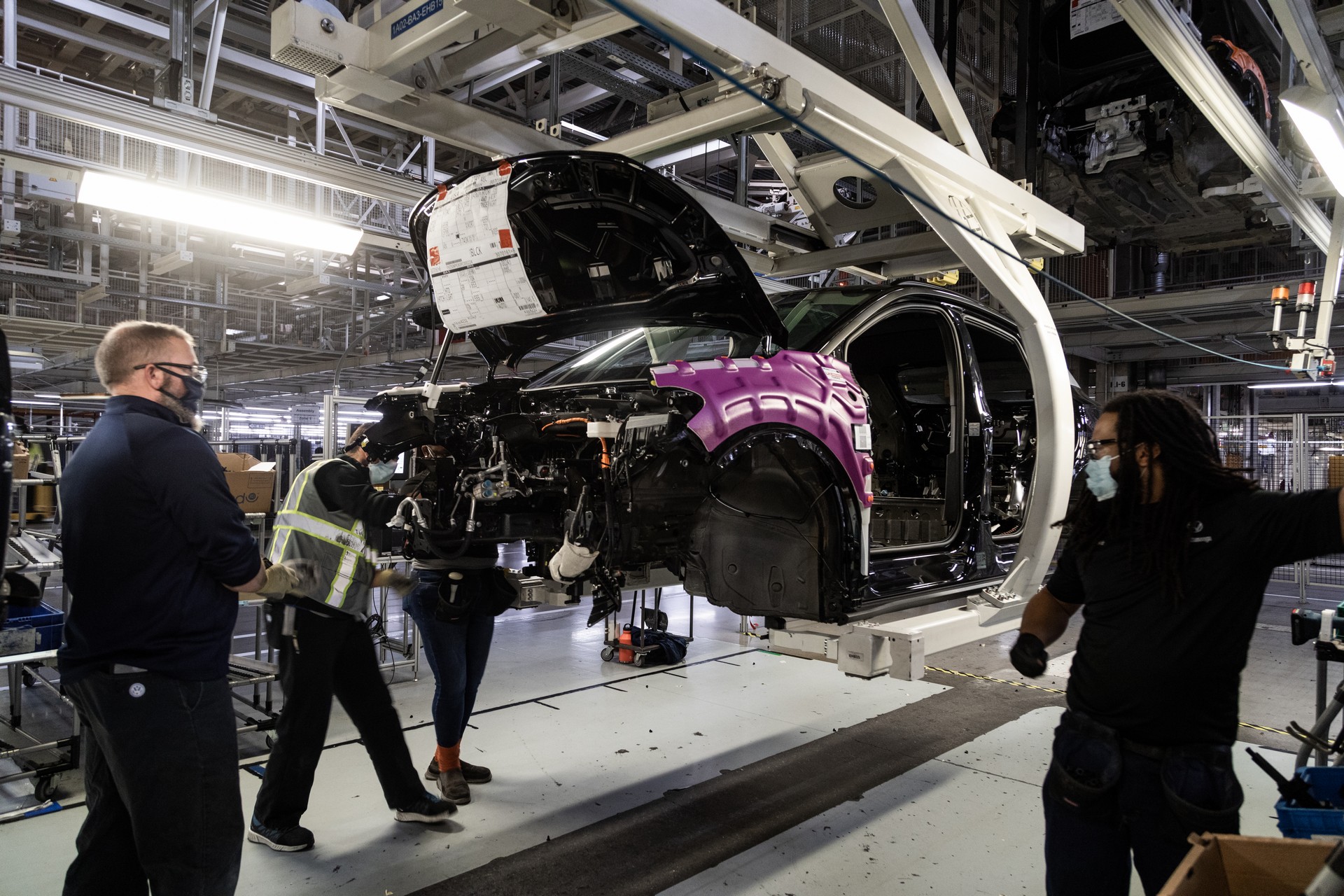Volkswagen is doubling down on electric vehicles as the company is investing $7.1 (£5.4 / €6.4) billion in North America, over the next five years, to “boost its product portfolio, regional R&D, and manufacturing capabilities.”
The big news is that Volkswagen is going EV-only in America and will begin to phase out gasoline-powered vehicles from its lineup. This won’t happen overnight, but the company is “aiming to exit from [ICE] sales at the beginning of the next decade.”
Unsurprisingly, this requires an assortment of new electric vehicles and a number of them will be built in the United States. As previously announced, the company’s plant in Chattanooga, Tennessee will begin building the ID.4 in the second half of 2022.
Also Read: VW ID. Buzz Unveiled As A Delicious Microbus EV In Both Passenger And Cargo Van Flavors
The company will then offer the ID. Buzz in America in 2024, while “new electric SUVs” will follow starting in 2026. That’s just the tip of the iceberg as Volkswagen Group brands will introduce more than 25 new electric vehicles to American consumers through 2030.
Besides new EV production, Volkswagen’s Battery Engineering Lab in Chattanooga will start operations in May. It will enable the automaker to test and validate batteries for all their upcoming electric vehicles in the American marketplace.
Furthermore, Volkswagen is focusing on American consumers as they’re aiming to “localize all major design and engineering responsibilities for the ‘vehicle hat’ (body and interior) of products destined for the domestic markets by 2030.” The company said this “approach reflects the company’s emphasis on American consumer demands, while scaling Volkswagen Group’s global vehicle platforms (MEB and future SSP).” In effect, it sounds like future models will ride on a global architecture but feature unique styling inside and out to appeal to Americans.
Outside of America, Volkswagen is planning to “upgrade its factories in Puebla and Silao, Mexico, for the assembly of electric vehicles and components (such as e-motors), by the middle of the decade.”






